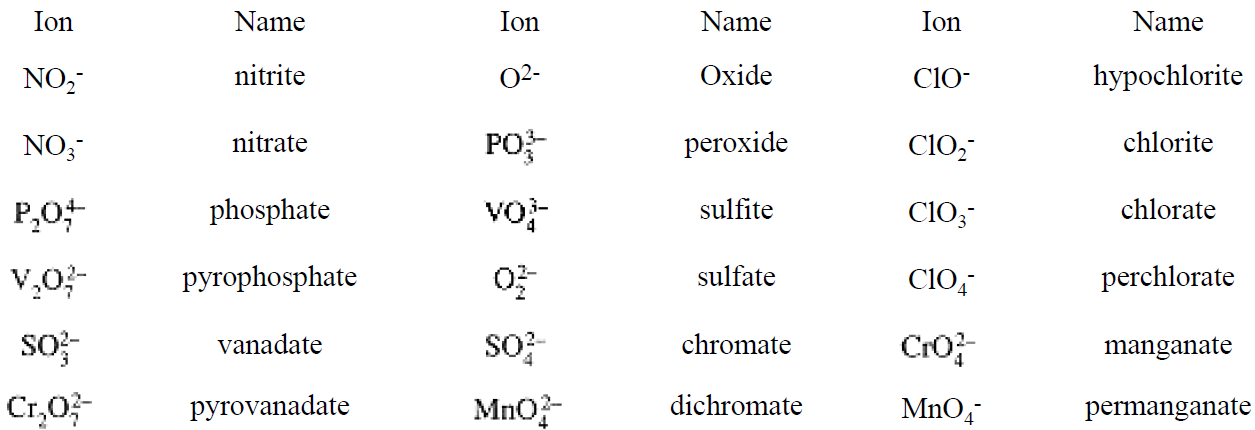

علم الكيمياء

تاريخ الكيمياء والعلماء المشاهير

التحاضير والتجارب الكيميائية

المخاطر والوقاية في الكيمياء

اخرى

مقالات متنوعة في علم الكيمياء

كيمياء عامة


الكيمياء التحليلية

مواضيع عامة في الكيمياء التحليلية

التحليل النوعي والكمي

التحليل الآلي (الطيفي)

طرق الفصل والتنقية


الكيمياء الحياتية

مواضيع عامة في الكيمياء الحياتية

الكاربوهيدرات

الاحماض الامينية والبروتينات

الانزيمات

الدهون

الاحماض النووية

الفيتامينات والمرافقات الانزيمية

الهرمونات


الكيمياء العضوية

مواضيع عامة في الكيمياء العضوية

الهايدروكاربونات

المركبات الوسطية وميكانيكيات التفاعلات العضوية

التشخيص العضوي

تجارب وتفاعلات في الكيمياء العضوية


الكيمياء الفيزيائية

مواضيع عامة في الكيمياء الفيزيائية

الكيمياء الحرارية

حركية التفاعلات الكيميائية

الكيمياء الكهربائية


الكيمياء اللاعضوية

مواضيع عامة في الكيمياء اللاعضوية

الجدول الدوري وخواص العناصر

نظريات التآصر الكيميائي

كيمياء العناصر الانتقالية ومركباتها المعقدة


مواضيع اخرى في الكيمياء

كيمياء النانو

الكيمياء السريرية

الكيمياء الطبية والدوائية

كيمياء الاغذية والنواتج الطبيعية

الكيمياء الجنائية


الكيمياء الصناعية

البترو كيمياويات

الكيمياء الخضراء

كيمياء البيئة

كيمياء البوليمرات

مواضيع عامة في الكيمياء الصناعية

الكيمياء الاشعاعية والنووية
Nomenclature Based on Oxidation States
المؤلف:
Jerome L. Rosenberg and Lawrence M. Epstein
المصدر:
College Chemistry
الجزء والصفحة:
p 85
12-7-2017
1898
Nomenclature Based on Oxidation States
Many metals exhibit two or more oxidation states. This is particularly true of the transition metals, where cations with ONs of +2 and +3 are common, but also of the heavier main-group metals such as thallium (ONs +1 and +3), and tin and lead (ONs of +2 and +4).
The modern system of nomenclature uses ONs directly in naming compounds. Thus in FeO and Fe2O3, the ONs of Fe are +2 and +3, respectively, and we name these compounds iron(II) oxide and iron(III) oxide. Similarly, phosphorus(III) cholride is PCl3 and phosphorus(V) chloride is PCl5.
The traditional nomenclature for salts of such metals is to use the suffix -ic for the higher ON and –ous for the lower, often using the Latin name for the element, e.g., ferrous (Fe2+) and ferric (Fe3+), stannous (Sn2+) and stannic (Sn4+), chromous (Cr2+) and chromic (Cr3+).
Monatomic and polyatomic anions containing a single element are named with the -ide suffix, regardless of the formal oxidation state, e.g., chloride (Cl-), sulfide (S2-), and triiodide (I3-).
Both metals and nonmetals form oxoanions with the central atom in a variety of oxidation states, e.g., NO2- and NO3-, MnO42- and MnO4-. The traditional names reflect these differences by using the suffix - ate for the higher oxidation number and -ite for the lower. When more than two oxidation states are found, the highest uses the -ate suffix with the prefix per-, and the lowest uses the -ite suffix with the prefix hypo-. Some oxoanions with two central atoms linked by an oxygen use the di- prefix (indicating 2), others use the pyro- prefix, (indicating their origins as products obtained by heating—pyrolysis).
Some of the more common polyatomic anions are listed in Table 1.1.
Table 1.1. Common Anions Exhibiting Variable ON's

 الاكثر قراءة في مقالات متنوعة في علم الكيمياء
الاكثر قراءة في مقالات متنوعة في علم الكيمياء
 اخر الاخبار
اخر الاخبار
اخبار العتبة العباسية المقدسة

الآخبار الصحية















 قسم الشؤون الفكرية يصدر كتاباً يوثق تاريخ السدانة في العتبة العباسية المقدسة
قسم الشؤون الفكرية يصدر كتاباً يوثق تاريخ السدانة في العتبة العباسية المقدسة "المهمة".. إصدار قصصي يوثّق القصص الفائزة في مسابقة فتوى الدفاع المقدسة للقصة القصيرة
"المهمة".. إصدار قصصي يوثّق القصص الفائزة في مسابقة فتوى الدفاع المقدسة للقصة القصيرة (نوافذ).. إصدار أدبي يوثق القصص الفائزة في مسابقة الإمام العسكري (عليه السلام)
(نوافذ).. إصدار أدبي يوثق القصص الفائزة في مسابقة الإمام العسكري (عليه السلام)


















